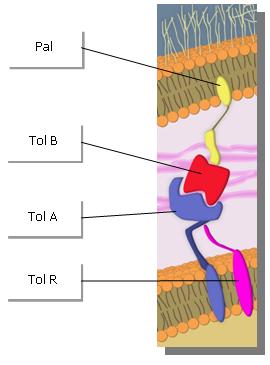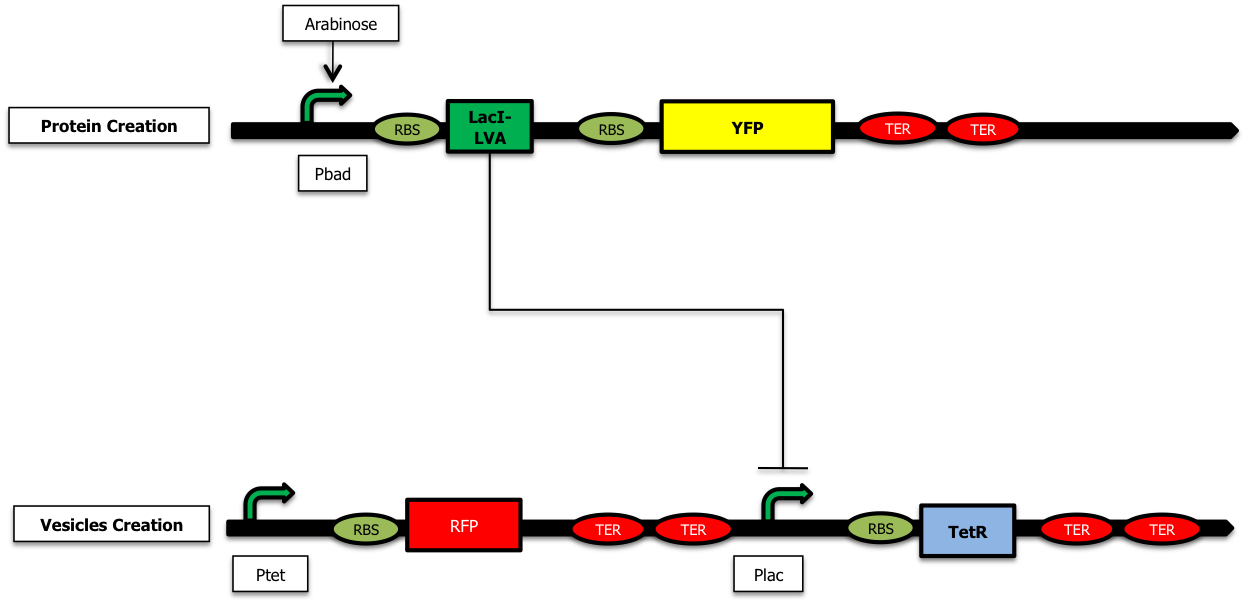Team:Paris/Production overview
From 2009.igem.org
| Line 4: | Line 4: | ||
==Overview== | ==Overview== | ||
| + | <html> | ||
| + | </div> | ||
| + | <div id="paris_content_boxtop"> | ||
| + | </div> | ||
| + | <div id="paris_content"> | ||
| + | </html> | ||
==='''A. Introduction'''=== | ==='''A. Introduction'''=== | ||
| Line 13: | Line 19: | ||
[[Image:TolPal.jpg|250px|center| Tol-Pal system]] | [[Image:TolPal.jpg|250px|center| Tol-Pal system]] | ||
| + | |||
| + | <html> | ||
| + | </div> | ||
| + | <div id="paris_content_boxtop"> | ||
| + | </div> | ||
| + | <div id="paris_content"> | ||
| + | </html> | ||
==='''B. Our strategy'''=== | ==='''B. Our strategy'''=== | ||
| Line 22: | Line 35: | ||
In the same framework, we could also overexpress various Tol ligand (colicin) to destabilize the membrane. | In the same framework, we could also overexpress various Tol ligand (colicin) to destabilize the membrane. | ||
| + | <html> | ||
| + | </div> | ||
| + | <div id="paris_content_boxtop"> | ||
| + | </div> | ||
| + | <div id="paris_content"> | ||
| + | </html> | ||
==='''C. Construction'''=== | ==='''C. Construction'''=== | ||
Revision as of 15:12, 7 August 2009
Contents |
Overview
A. Introduction
In our project, we need to destabilize the outer membrane to create outer membrane vesicles (OMVs). We found that the best method is to use the Tol/Pal system. [1] The Tol/Pal system of Escherichia coli is required to maintain outer membrane integrity. It is composed of five cell envelope proteins, TolA, TolB, TolQ, TolR and Pal.[2][3] The TolAQR proteins form a protein complex in the inner membrane. TolB is a periplasmic protein associated with Pal, a lipoprotein. Pal is anchored to the outer membrane and interacts with the peptidoglycan layer. There are interactions with TolA–Pal and TolA–TolB
B. Our strategy
The first strategy is the knock out of tol/pal gene witch destabilize the membrane .It is an active system, whereas the use of conditional mutant is a passive system. A previous study [2] focused on the development of a gene expression system able to induce production of large amounts of OMVs.
To achieve our goal we decided to take advantage of the second domain of TolR (TolRII). We don’t use the third domain of TolA because, it doesn’t work so good and TolAIII have lot of PstI domain in his sequence. In order to achieve our project, we will overexpress specifically designed biobricks containing TolRII fused with OmpA signal which allows it to migrate in the periplasm.[3]
In the same framework, we could also overexpress various Tol ligand (colicin) to destabilize the membrane.
C. Construction
C.1. Creation of OMVs
To create the vesicules, we started with a first simple construction only containing the unfunctional TolR II biobrick placed donwstream a pTetR promoter. With the presence of arabinose in the medium, pBad is activated and TetR, a repressor of the pTetR pomoter in created and represses the Pter promoter (Figure a). The addition of tetracycline or its analog, aTc, in the medium inhibits the repression thus allowing the creation of vesicules (Figure b).
For further precisions on the biobricks used as well as the plasmid backbones, please visit our parts design page here.
C.2. The delay
To avoid a premature production of vesicles, we have introduced a delay system inside the plasmids. This kind of device was studied by Hooshangi & Weiss using a transcriptional cacasde made of two repressor namely TetR and LacI :
Nevertheless, as the pLacI promotor is leaking, we tried to exchange the order of the two repressors to avoid a low but constant expression of TolR. When there is arabinose in the medium, the creation of LacI represses the Plac promoter and prevent the creation of TetR ; this way, the Ptet promoter is no longer repressed and GFP is expressed in the medium.
References
[1] Transmembrane a-helix interactions are required for the functional assembly of the escherichia coli Tol complex. Lazzaroni & Geli 1995
[2] The Tol-Pal proteins of the Escherichia coli cell envelope an energized system required for outer membrane integrity. Lloubès & Journet 2001
[3] Improved methods for producing outer membrane vesicles in gram-negative bacteria. Henry & Lloubès 2004
 "
"



